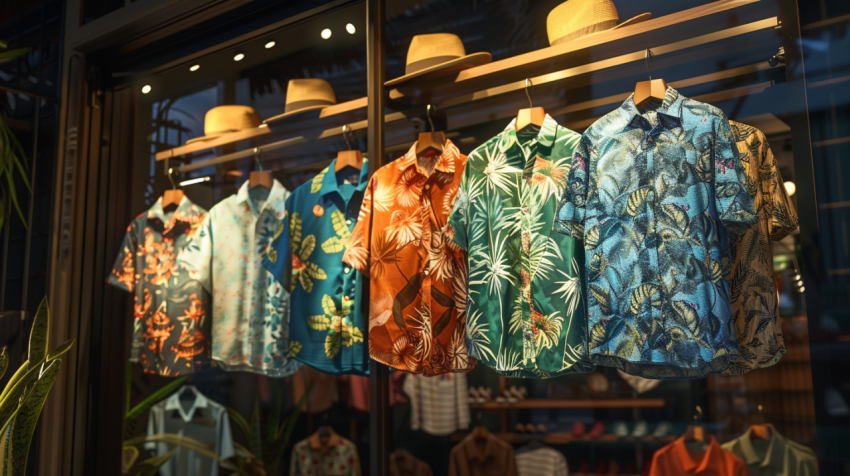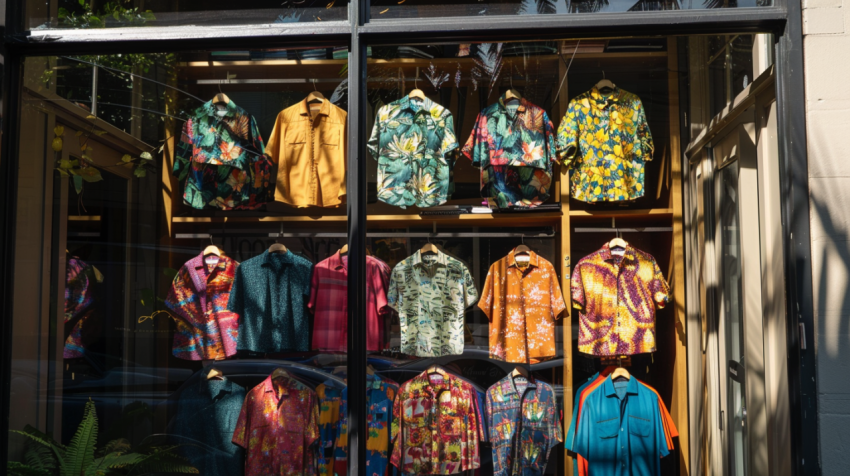



Shirts: A Timeless Wardrobe Essential for Every Occasion
The shirt, a garment covering the upper body, is a fundamental element of wardrobes across cultures and throughout history. From the simple tunics of ancient times to the diverse and stylish shirts of today, the shirt has evolved to reflect changing social norms, technological advancements, and aesthetic preferences. Shirts serve both practical and decorative purposes, offering protection, comfort, and a canvas for self-expression through style.
1. The Evolution of the Shirt: From Undergarment to Outerwear
- The earliest forms of shirts were simple, tunic-like garments worn as undergarments or nightwear.
- In the Middle Ages, shirts began to be worn as outerwear by the working class, while the wealthy continued to wear them primarily as undergarments.
- During the Renaissance, shirts became more elaborate, featuring ruffles, lace, and embroidery, particularly among the aristocracy.
- The 18th and 19th centuries saw the development of the modern shirt, with features like collars, cuffs, and buttons.
- The invention of the sewing machine in the mid-19th century revolutionized shirt production, making them more affordable and accessible.
2. Types of Shirts: A Style for Every Occasion
The world of shirts offers an incredible variety of styles, each suited for different occasions and personal preferences:
- Dress Shirt: A formal shirt, typically with a collar, cuffs, and a full button front, often worn with a suit and tie.
- Barrel Cuff: The most common type of cuff, featuring buttons to close.
- French Cuff: A more formal cuff that is folded back and fastened with cufflinks.
- Button-Down Shirt: A shirt with a collar that buttons down to the shirt front, offering a slightly more casual look than a traditional dress shirt.
- Casual Shirt: A broad category encompassing a wide range of shirt styles, including:
- Oxford Shirt: A durable and versatile shirt made from Oxford cloth, often featuring a button-down collar.
- Flannel Shirt: A soft, warm shirt made from flannel fabric, typically featuring a plaid pattern.
- Chambray Shirt: A lightweight shirt made from chambray fabric, often resembling denim.
- Denim Shirt: A shirt made from denim fabric, offering a rugged and casual look.
- Polo Shirt: A knitted shirt with a collar and a placket with two or three buttons, originally designed for sports like tennis and polo.
- T-Shirt: A simple, short-sleeved shirt without a collar or buttons, typically made from cotton jersey.
- Henley Shirt: A collarless shirt with a placket of buttons that extends partway down the chest.
- Blouse: A shirt specifically designed for women, often featuring more decorative elements and a wider range of styles, including:
- Peasant Blouse: A loose-fitting blouse with flowing sleeves, often featuring embroidery or other embellishments.
- Wrap Blouse: A blouse that wraps around the body and ties at the side or back.
- Shirt Blouse: A more tailored blouse that resembles a men's shirt, often with a collar and button front.
3. Shirt Fabrics: A World of Texture and Performance
Shirts are made from a vast array of fabrics, each with its own unique properties:
- Cotton: The most popular shirt fabric, known for its softness, breathability, and durability.
- Oxford Cloth: A basketweave fabric that is durable and slightly textured.
- Broadcloth/Poplin: A smooth, tightly woven fabric often used for dress shirts.
- Twill: A fabric with a diagonal weave, creating a durable and slightly textured surface.
- Flannel: A soft, brushed fabric that provides warmth.
- Linen: A natural fabric made from flax fibers, known for its breathability and cool feel, ideal for warm weather.
- Silk: A luxurious and delicate fabric that drapes beautifully, often used for dress shirts and blouses.
- Polyester: A synthetic fabric that is wrinkle-resistant, durable, and often blended with other fibers.
- Rayon: A semi-synthetic fabric that is soft, absorbent, and drapes well, often used as a silk substitute.
4. Shirt Fit: Finding the Perfect Silhouette
The fit of a shirt is crucial for both comfort and style:
- Classic Fit: A traditional fit that is comfortable and roomy, with a straight cut through the body.
- Slim Fit: A more tailored fit that is closer to the body, creating a more modern silhouette.
- Regular Fit: A balance between classic and slim fit.
- Skinny Fit: An even more fitted style that is very close to the body.
- Muscle Fit: Designed to showcase a muscular physique, these are very fitted around the chest and arms.
5. Shirt Collars: A Defining Detail
The collar is a defining feature of many shirts, and there are numerous styles to choose from:
- Point Collar: The most common collar type, featuring points that point downwards.
- Spread Collar: A collar with wider points that spread away from the center, often worn with a tie.
- Button-Down Collar: A collar with buttons that fasten the points to the shirt front.
- Club Collar: A collar with rounded points, offering a vintage-inspired look.
- Band Collar: A collar that stands up straight around the neck without any points, also known as a Mandarin collar.
6. Styling the Shirt: Endless Possibilities
Shirts are incredibly versatile garments that can be styled in countless ways:
- Formal: A dress shirt paired with a suit and tie is the standard for formal occasions.
- Business Casual: An Oxford shirt or a button-down shirt worn with chinos or slacks creates a polished yet relaxed look.
- Casual: T-shirts, polo shirts, and flannel shirts are perfect for everyday wear.
- Layered: Shirts can be layered under sweaters, jackets, or cardigans for added warmth and style.
7. Shirt Care and Maintenance
- Always check the label for specific care instructions.
- Most cotton shirts can be machine washed, while delicate fabrics like silk may require hand washing or dry cleaning.
- Ironing or steaming can help to remove wrinkles and maintain a crisp appearance.
8. The Future of Shirts
- Technology is playing an increasingly important role in shirt design and production, with innovations like moisture-wicking fabrics, wrinkle-resistant treatments, and even embedded sensors.
- Sustainability is also becoming a major focus, with brands using organic cotton, recycled materials, and ethical manufacturing practices.
Conclusion:
The shirt is a timeless and essential garment that has evolved significantly over centuries. From its practical origins to its status as a fashion staple, the shirt offers endless possibilities for self-expression and style. Understanding the different types of shirts, fabrics, fits, and collars can help you choose the perfect shirt for any occasion. As fashion continues to evolve, the shirt will undoubtedly remain a central element of wardrobes around the world, adapting to new trends while retaining its enduring appeal.
Shirts, types of shirts, men's shirts, women's shirts, dress shirts, casual shirts, button-down shirts, t-shirts, polo shirts, flannel shirts, oxford shirts, shirt fabrics, cotton shirts, linen shirts, silk shirts, shirt fit, slim fit shirts, classic fit shirts, shirt collars, point collar, spread collar, button-down collar, how to style a shirt, shirt outfits, shirt care, best shirt brands, shirt history, blouse, women's blouses, shirt and tie combinations, white shirt, blue shirt, black shirt, where to buy shirts, custom shirts.

